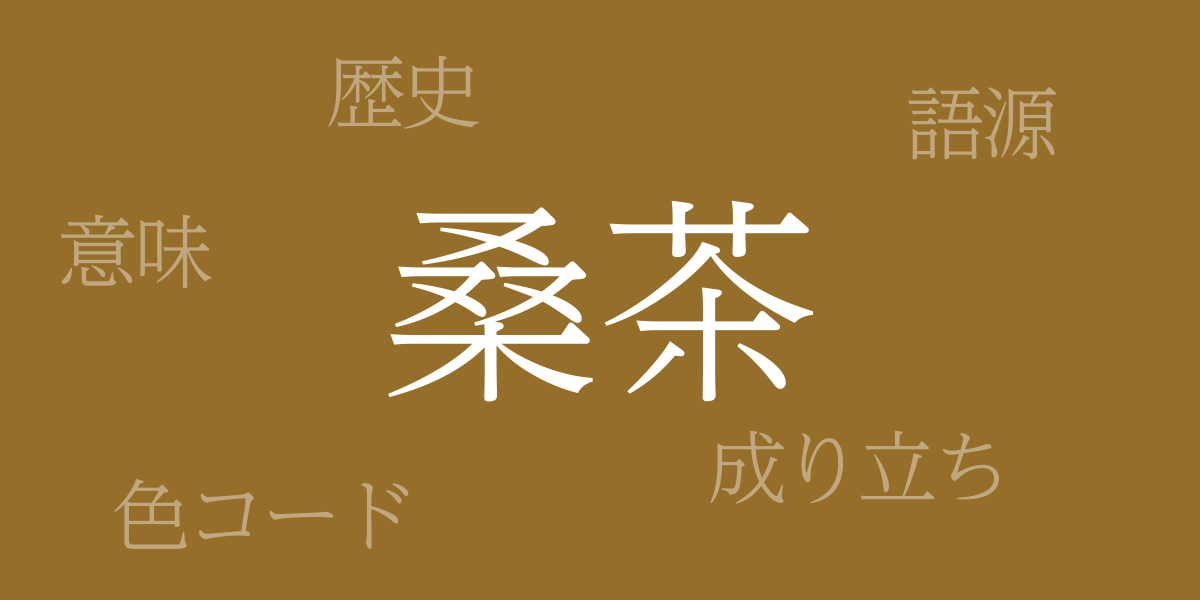Color is a magical presence that stirs emotions and reflects cultures. In Japan, this magic has been refined over centuries, presenting a unique sense of color to the world. This article focuses on one of Japan’s traditional colors, “Kuwacha” (桑茶 – くわちゃ), exploring its profound allure.
About Kuwacha (桑茶 – くわちゃ)
Kuwacha (桑茶 – くわちゃ), as the name suggests, is a traditional Japanese color reminiscent of the color of tea made from fermented mulberry leaves. It possesses a unique depth and calmness, symbolizing Japanese taste and is beloved by many. This color harmonizes with nature and has been used in various traditional Japanese crafts, including kimonos and Nihonga (Japanese paintings).
The History of Kuwacha
The history of Kuwacha is ancient, established during the Heian period as a dyeing technique in Japan. The mulberry tree, historically essential for silk fabric production as food for silkworms, provided the pigments for dyes developed from its leaves. Over time, the color Kuwacha became a natural part of Japanese life, forming an essential element of Japan’s traditional color sensibility.
Color Codes for Kuwacha
In digital and web design, accurate color codes are necessary to replicate traditional colors. Below are the color codes for Kuwacha:
- HEX: #956F29
- RGB: R:149 G:111 B:41
- CMYK: C:49 M:59 Y:98 K:5
Western Name for Kuwacha
In the West, Kuwacha is sometimes known as “Mocha”. This name originates from Mocha, Yemen, historically a major port for coffee bean exports, known for its deep brown hues. While Kuwacha carries different names in Japanese and Western cultures, its color charm is universally recognized.
Conclusion on Kuwacha
Kuwacha represents a color interwoven with Japanese tradition and nature’s gifts. Its history is deep-rooted in Japanese life, and even in the digital age, its beautiful hues are expressed through color codes, continuing to convey Japanese traditional beauty to the world. Known as “Mocha” in Western contexts, Kuwacha’s universal appeal transcends borders, embodying the spirit of Japanese harmony that we hope to cherish forever.

























